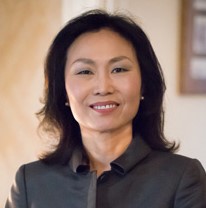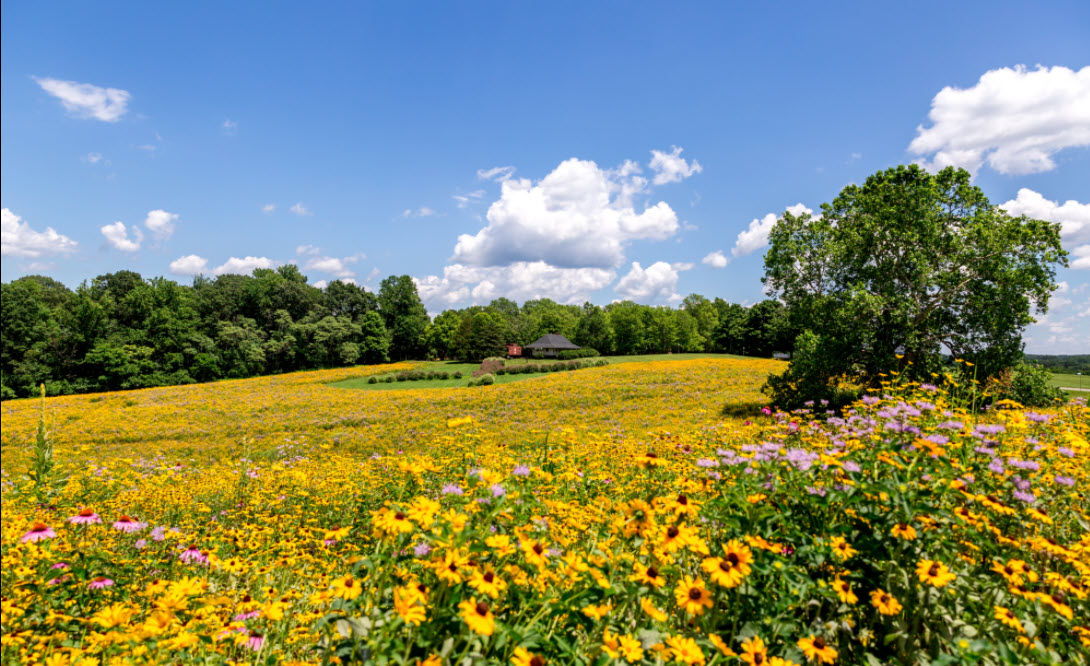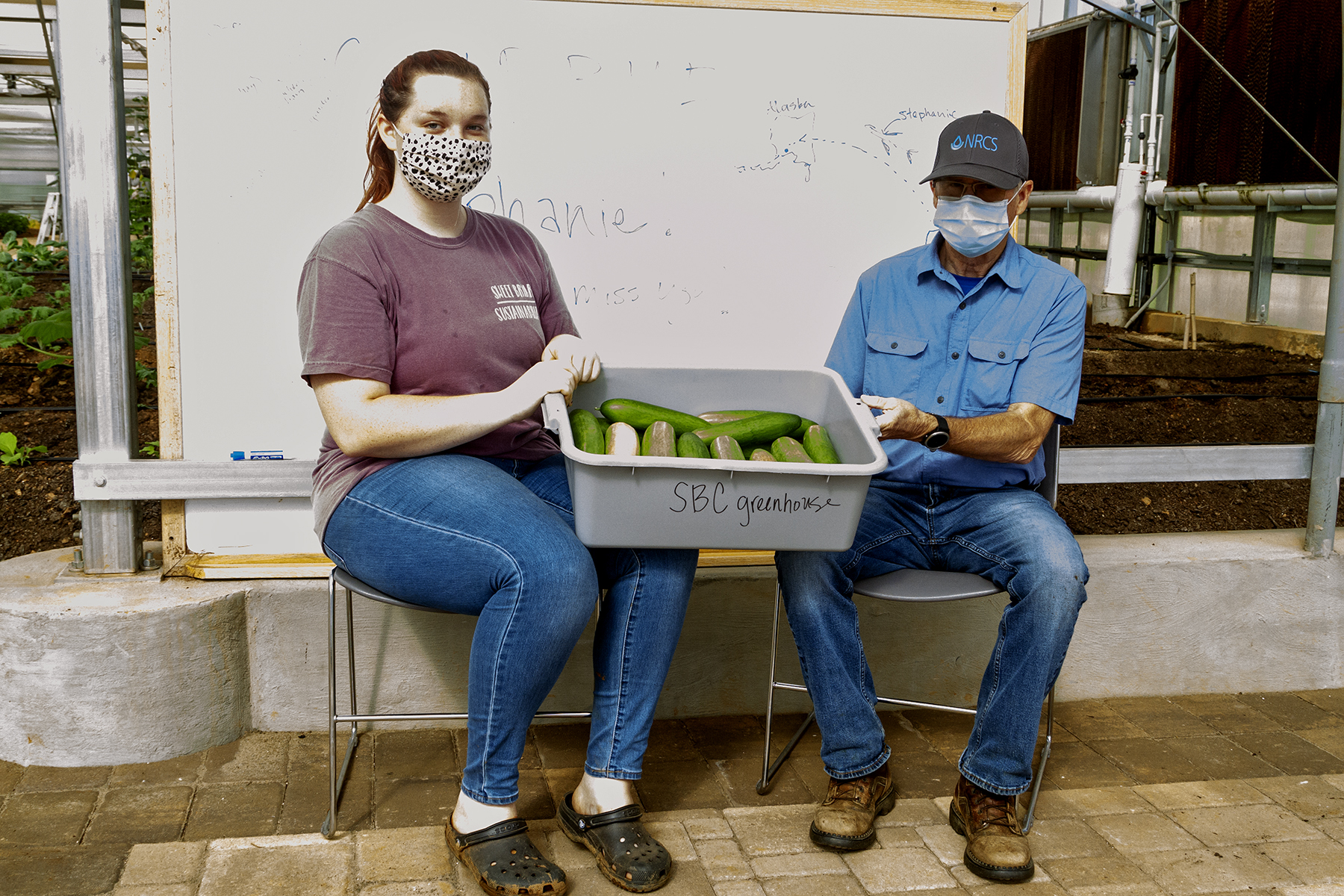Those who have been around higher education for a while have likely heard the name: Sweet Briar College.
The words are resplendent, beautiful, befitting its location in the foothills of the Blue Ridge Mountains. For many women, Sweet Briar always will be the essence of the liberal arts experience, a place to experience nature and free thought in an idyllic, quiet setting. For some, it still evokes bittersweet memories.
In 2015, this institution nearly faded into the Virginia landscape for good before alumnae and donors rescued it from being shuttered. Those were dark days for Sweet Briar, especially for its attendees and faculty. But six years later, with another spring about to bloom, it is rising again.
Comeback stories are often part of the fabric of an agrarian lifestyle, and the story of Sweet Briar is no different. Planting seeds after a disaster and watching them grow takes persistence, patience and faith. Turning the page to 2021, growth is happening here. Slowly. Surely.
Sweet Briar, in fact, has been named one of U.S. News and World Report’s Most Innovative Schools for 2021. Behind its strong base of alums, partnerships with the USDA’s Natural Resources Conservation Service and the Virginia Department of Forestry and Wildlife Groups, the college is exceeding expectations and delivering to a whole new crop of students. Since 2015, enrollment is up 42%.

At the heart of this turnaround – where liberal arts and leadership meet agriculture – is President Meredith Woo, who came on board three and a half years ago with a mission and vision to return Sweet Briar to its glory years, while cultivating a future for the women who attend it.
“I thought, this is probably the most exciting challenge that I’m going to have in my work life, and so I took it,” she says. “I have been really happy ever since.”
Woo brought with her unparalleled leadership, as former Dean of the College and Graduate School of Arts & Sciences at the University of Virginia and her work in international education and politics, along with her penchant for writing as author of seven books.
She has helped bring life and a spirit back to this campus – from the dozens of horses that serve its award-winning equestrian program and students, to its 20-acre vineyard and 26,000-square-foot greenhouse, to the components that comprise its unique academic programs in areas such as STEM, the arts, pre-vet and pre-law.
Aside from collaborating on a conservation plan with forestry agencies and the USDA’s Natural Resources Conservation Service (NRCS) led by Don Yancey, the college has implemented core curriculum offerings around agriculture with the help of professor Lisa Powell, director of the Center for Human and Environmental Sustainability.
The school’s greenhouse opening in 2019 even attracted the attention of state Sen. Mark Warner and former U.S. Secretary of Agriculture Sonny Perdue, who said he was “excited and intrigued” by what the university was accomplishing.
University Business recently chatted with Woo about the many changes happening on campus and the future of Sweet Briar:
How much of a transformation had to take place at Sweet Briar when you first arrived here?
The path forward was fairly clear. We started with the cataclysm of 2015. We lost all the students when the decision was made to disperse them. One can argue the previous administration and the board made a decision that a college that does liberal arts and is a woman’s college located in rural Virginia was a wrong idea at the wrong time. You can see how they thought about it. In the competitive landscape of higher education and the marketplace, being a liberal arts school, generically – women don’t want to go to a woman’s college in rural Virginia when everybody wants to be in cities. It seemed like the wrong combination of factors. For us, it was to take that structural reality and turn it into the right idea at the right time at the right place.
The right idea was the notion of female leadership embodied within the liberal arts. The right time was the notion that women will inherit this century; this is a good time to be a woman’s college. The place, rural Virginia, could put us in a really good stead if we know how to work the land and honor it. In Virginia, agriculture is the No. 1 industry in the private economy, and 40% of women constitute primary agricultural operators. The work we do is not like corporate agriculture, but much of it is artisanal, centering around winemaking and things like that. Those were some abstract ideas that motivated us to get to where we are today. It was a lot of change, and there are times when we thought we might not make it. But I’m very happy to say that we seem to be doing just fine.
What were some of the initial goals you had?
Our focus was not so much trying to understand how to develop a particular kind of academic focus, but thinking about it in a more holistic way, based on three considerations:
- How do we marry the environment with the curriculum so that we take full advantage of what we have?
- How do we make ourselves into the engine of economic growth in our area, which is distressed in Amherst County?
- How do we figure out a way in which women going forward can see artisanal agriculture and farming in a more localized way, rather than commercial agriculture as a viable and honorable career path?
That is not to say that we want all our girls to be Farmer Jane, but we feel that this is a very interesting field, where Virginia is leading the way, and we could play some part in it. Our starting point was more holistic and opportunistic, and thinking about our location, our state, our past and our curriculum.
Can you talk about the value of the location and the amazing happenings there?
We have the most spectacularly beautiful campus that used to be a working farm. So how do we connect the dots? How do we create a co-curriculum with the formal curriculum that emphasizes leadership, but imbue it with the sentiment about sustainability and an ethos of leading our society into a sustainable future? We not only have a beautiful campus, we have the nation’s oldest equestrian program, which is hands down the best equestrian program among liberal arts colleges. We have 85 horses. We have 2,000 acres of forest. We moved ahead to try to create an artisanal agricultural infrastructure that can teach women what it means to take care of themselves: to eat well, to grow things, to market them, to understand global warming and larger macro issues. The students have totally responded to it.
In this unique moment, what are some of the caveats Sweet Briar can offer students?
As online education becomes more powerful and more productive, we at Sweet Briar can offer an education that really cannot be offered online. So much of it is experiential, so much of it is hands on. So much of it relies on land and sustainability, resources that you can’t have in the living room. You can’t be pre-vet, as a lot of our students are, by sitting and logging on. The fact that we have created a kind of a school that is so deeply hands on, so deeply student-centered, is gold for us. We feel that the pandemic reinforced that. We are one of the few schools that didn’t lose students. In fact, we’re gaining students. Next fall looks really great in terms of enrollment. I think it’s an indication that our model is the right.
You said last May that you thought the college was positioned to handle the fallout from the pandemic.
This is not brain science. When the pandemic hit, we thought we were the safest place on Earth, where women could thrive. It isn’t just that we’re small. It isn’t just that we are in rural Virginia. We actually could provide what we always called Virginia Woolf’s “Room of Her Own.” Every student could have a room of her own because we had some capacity there. In the immediate aftermath, the fact that a small woman’s college could truly provide for safety and be caring, so that the parents would want to send their kids during the pandemic to Sweet Briar was something that was clear to us, and we built on it. We began feeling more strongly than ever that our model was the right one. … So many people in higher ed keep talking about how liberal arts colleges, the small ones are going to fail, they’re going to go by the board. But we think we can do this right.
Some of Sweet Briar’s best traits through its history seem to be personalized attention and small class sizes? Is that true?
We haven’t changed one bit. Sweet Briar has always been small. That’s one thing that’s been very consistent. The school never tried to go too far beyond 600 [students]. We never fell too far below 600. Its métier is high-touch, student-oriented. We really pay attention to students to bring about a transformative experience. It has always been a very caring place. If it has worked well for 100 years, why ditch it?
The outpouring of support from alumnae years ago was tremendous. Have you spoken with many of them? How are they feeling about Sweet Briar now?
They really cherish the experience they had here. They are deeply committed. The amount of money that they’ve sent our way is unbelievable. When I was at UVA, we had 250,000 living alumni in the College of Arts and Sciences. Each year, we raised $4 million in unrestricted annual funds. It’s in part because UVA in terms of fundraising, they get major gifts, rather than relying on annual funds. At Sweet Briar, we have about 12,000 living alums. The smallest we’ve ever raised was $5 million unrestricted, and some years we raised $15 million, especially after we were threatened with closing down. This is an incredibly passionate bunch of women. I have been blessed to have their support, in spite of the fact that some of the things we did were radical, including getting rid of nearly half of the majors that they had majored in during their days. The focus on leadership and sustainability has hit a sweet spot with them.
Talk about the interplay between agriculture, the environment and the liberal arts education that is happening on campus.
There are schools that do work study or have a big agricultural component, like Warren Wilson in North Carolina or Antioch, where students will get credit for working the land. That’s really intensive agriculture. What we do isn’t really that. We’re not a work-study kind of place. We’re not trying to teach people how to be farmers. Much of what we do is using what we have, whether it’s a state-of-the-art greenhouse, smart farm, or the vineyard, to use that as the prop for liberal arts. If some people end up becoming professionals in sustainability, or getting involved in farming, more power to them. But we want that beautiful environment, that productive environment, to be the right kind of spirit where our students can be engaged in a liberal arts education and in leadership. It’s as beautiful an environment to study creative writing and to learn a little bit about Shakespearean plays, as it is about learning to be pre-vet, learning biology, and becoming an environmental engineer. We kind of think of it as a lab in which our students can be well trained in the liberal arts.
The sort of liberal arts environment at Sweet Briar, the appreciation of nature and creativity, sounds almost like a return to 1800s higher education and thought leaders of that time.
I think that we have our own Walden Pond here! It is the same kind of spirit. Who was it that wrote the American Scholar? I think it was [Ralph Waldo] Emerson. The American Scholar is somebody who thinks, who produces, who works with the land, with their hands. And so, there is this notion of the American Scholar that is both speculative as well as practical. I think that’s kind of where we’re headed.
What does leadership look like at Sweet Briar?
We don’t think about leadership in terms of power and influence. We think about leadership in terms of where women were in the past, when they lacked power and influence and how they exercised leadership. The most remarkable alumnae we produced are my ideal types for understanding how people exercise leadership when they haven’t had absolute power. They tend to collaborate. They tend to work as a team. They tend to give each other encouragement and credit rather than trying to claim credit. … We definitely need a different kind of leadership that’s more collaborative and that is more concerned about our collective survivability and sustainability going forward.
What kinds of outcomes are you hoping for the women of Sweet Briar?
We want them to be successful in whatever they do. When the college was founded, the woman who founded it [Indiana Fletcher Williams] was a successful businesswoman in the late 19th century. When she created this college, she said that she wanted to set up a college to educate women to be useful members of our society. I think that the term useful, which is an understatement, is a beautiful word. Whatever our women can do to be useful members of our society, to be helpful to others, and to lead satisfying lives and make some difference in the world as a result, we would be very happy.
Chris Burt is a reporter and associate editor for University Business and District Administration magazines. He can be reached at [email protected]



